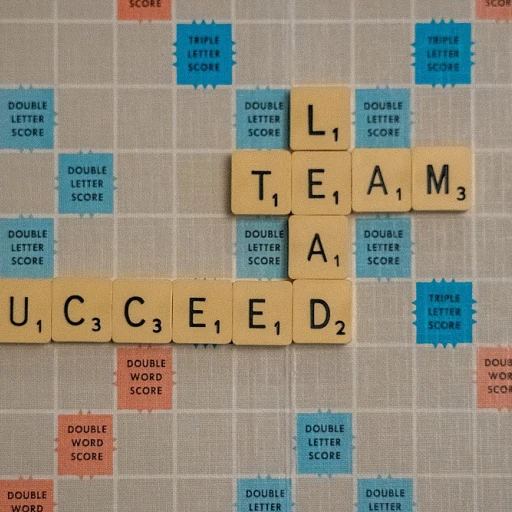Understanding Paraprofessional Roles
Exploring the Role of Paraprofessionals in Education
Paraprofessionals play a crucial role in today's educational landscape, particularly when it comes to supporting students with special needs. Often referred to as teacher aides or teaching assistants, these dedicated professionals provide vital instructional support that enhances the learning experience for all students in the classroom. Their presence not only assists teachers in classroom management but also contributes significantly to the development and implementation of effective educational and instructional strategies.
The responsibilities of paraprofessionals in education are diverse and multifaceted. They assist students with disabilities, ensuring that each individual receives the attention they need to thrive in a supportive learning environment. Additionally, they collaborate closely with teachers, contributing to the development of a comprehensive instructional approach that aligns with student needs and the overall objectives of the school year.
Paraprofessional certification and specialized training programs are essential for these education support roles. Such programs equip individuals with the skills necessary to meet the challenges that arise in a dynamic educational setting. The Department of Education often advocates for ongoing professional development to help paraprofessionals remain effective in their roles, adapting to new teaching methods and technologies. Continuous learning is key, paving the way for paraprofessionals to build a strong foundation of knowledge and improve their skills over time.
The special education field particularly benefits from the presence of trained paraprofessionals. They help bridge the gap between special needs students and the curriculum, ensuring an inclusive education experience. As educational roles continue to evolve, the demand for well-trained paraprofessionals who can provide exceptional classroom support is expected to grow.
For those interested in exploring further educational opportunities, evaluating product management courses may provide new insights into professional growth. Understanding the importance and impact of paraprofessionals in education is not only beneficial to current educators, but it also underscores the necessity for continuous training, which will ultimately enhance the educational experience for students.
The Importance of Continuous Learning for Paraprofessionals
The Value of Ongoing Development
For paraprofessionals, continual skill enhancement is not just beneficial, it's essential. In their pivotal roles within educational settings, paraprofessionals bridge the gap between teachers and students, facilitating a more effective learning environment. This ongoing development in paraprofessional training equips them to handle the dynamic needs of students in classrooms.
One core reason for the necessity of continuous learning is the ever-evolving nature of the classroom environment. As educational strategies and policies shift, paraprofessionals must adapt to new instructional strategies and techniques. This adaptation helps to ensure that they can provide effective support to both students and teachers, particularly in specialized settings such as special education.
Incorporating continuous training and education aids paraprofessionals in:
- Enhancing Instructional Skills: With more refined instructional skills, paraprofessionals can better assist teachers in executing lesson plans and managing classroom activities.
- Supporting Students with Disabilities: Paraprofessional education training, focused on understanding students' specific needs, ensures paraprofessionals are better prepared to aid students with disabilities.
- Improving Classroom Management: Strengthening classroom management skills helps in maintaining a conducive learning environment, ultimately benefiting the entire classroom.
- Professional Development: Regular training sessions encourage professional growth, turning paraprofessionals from teacher aides into more autonomous, critical components of the educational team.
To further explore avenues for enhancing one’s credentials and expertise, paraprofessionals might find that pursuing certain degrees aligns with breaking into more specialized fields. For those interested, here is a resource on
top degrees in the tech industry that can be a valuable reference.
Emphasizing the importance of continuous learning within paraprofessional education is crucial in preparing these dedicated individuals for the growing demands of today's educational landscape. As they improve their skills and expand their knowledge, paraprofessionals enhance their capacity to support both students and teachers effectively in every school year.
Key Components of Effective Paraprofessional Training Programs
Building Blocks of Effective Paraprofessional Education
Paraprofessional training programs encompass various components designed to equip paraprofessionals with the skills and knowledge necessary to support students and teachers effectively. Through comprehensive educational training, these programs aim to address the diverse needs of students, especially those with disabilities, within the classroom setting.
One of the core elements of paraprofessional training involves understanding the specific roles and responsibilities that a paraprofessional, often known as a teaching assistant or teacher aide, performs in supporting instructional and classroom management strategies. The training programs emphasize personalized support, ensuring that paraprofessionals are well-prepared to assist students with unique learning needs, and to foster an inclusive educational environment.
The integration of instructional strategies and classroom management techniques forms a critical part of the training. Paraprofessionals learn to implement and adapt these strategies to complement the teacher's efforts, enhancing the educational experience for students. Additionally, effective communication and collaboration skills are highlighted, as they are vital for successful interactions between paraprofessionals, teachers, students, and other education stakeholders.
Professional development is another significant aspect of these training programs. This includes continued learning opportunities to keep paraprofessionals updated with the latest educational practices and policies from the department of education. Engaging in such learning helps paraprofessionals to develop the expertise and authority needed to support both general and special education classrooms.
Moreover, the training offers vital tools like a paraprofessional training binder, which serves as an essential resource throughout the school year. This binder typically contains instructional materials, privacy policies, and classroom management guidelines which are integral for maintaining an organized and effective learning environment.
For more detailed insights into the elements that contribute to effective paraprofessional education, explore the nuances of theories such as the
Class Theory of Knowledge, which provide foundational understanding for both educators and paraprofessionals alike.
Challenges in Paraprofessional Education Training
Overcoming Roadblocks in Paraprofessional Growth
Continuous learning plays a crucial role in the achievements of paraprofessionals, but there are challenges inherent in paraprofessional education training that both organizations and individuals must contend with. Successfully navigating these challenges is essential for fostering an environment where paraprofessionals can support students effectively.
One of the primary challenges faced by paraprofessionals is juggling professional development with the demands of their day-to-day responsibilities in the classroom. Paraprofessionals often work closely with students, especially in special education settings, and their workload does not always allow for dedicated time to pursue further training or education. Therefore, implementing flexible learning options is crucial so they can build their instructional skills, classroom management, and development strategies without compromising their duties.
Additionally, paraprofessionals sometimes encounter limited access to high-quality training resources. The availability of paraprofessional training programs and educational materials varies significantly across different school districts and states. While some areas provide comprehensive training binders, updated instructional strategies, and educational workshops, others may face budget constraints that limit these opportunities. To bridge this gap, schools and departments of education should prioritize investments in continuous learning initiatives that provide equitable access to training resources.
Furthermore, the lack of a standardized pathway for paraprofessional certification can result in inconsistent professional development experiences. This inconsistency poses a barrier to ensuring that all paraprofessionals possess the necessary skills and knowledge required to support students with disabilities and contribute effectively to the educational team. A push towards a more uniform certification process and collaborative efforts between schools and educational boards can help establish clear guidelines for professional development.
Privacy policies and data protection measures are another consideration that cannot be ignored. As paraprofessionals gain deeper insight into students' educational needs and personal information, educational institutions must ensure compliance with privacy regulations. Paraprofessionals should receive training on these policies to safeguard the sensitive information they might encounter.
Addressing these challenges requires a multifaceted approach that involves both systemic changes and individual commitment. By fostering an environment that supports continuous learning, schools can empower paraprofessionals to not only achieve paraprofessional certification but also thrive in their critical roles as teacher aides and instructional assistants throughout each school year.
Strategies for Successful Continuous Learning
Adopting Effective Techniques for Lifelong Learning in the Paraprofessional Space
In the context of paraprofessional education, adhering to strategies that foster successful continuous learning is paramount. The imperative for paraprofessionals to persistently advance their skills ensures they remain adaptable and effective in supporting students, especially those with disabilities, within the dynamic classroom environment.
Continuous learning for paraprofessionals encompasses a variety of strategies aimed at developing their proficiencies and enhancing their instructional support capabilities:
- Engagement in Professional Development Workshops: Participation in training programs and workshops the department of education offers allows paraprofessionals to acquire new instructional strategies and classroom management techniques. These sessions are pivotal, as they address evolving educational methodologies and innovations in special education.
- Utilization of Paraprofessional Binders: A paraprofessional binder can be an invaluable tool, encompassing resources, training materials, and documentation of classroom practices. By maintaining an organized binder, paraprofessionals can access instructional guides, privacy policy information, and other pertinent documents, thus supporting their strategic development and daily responsibilities more effectively.
- Collaboration with Teachers: Building a collaborative relationship with teachers, including special education professionals, can greatly enhance a paraprofessional's impact. Through this collaboration, paraprofessionals can align their strategies with instructional goals, ensuring consistent support for students throughout the school year.
- Incorporating Feedback and Reflection: Regularly seeking feedback from teachers and peers and reflecting on one's performance are critical components of continuous improvement. By understanding areas for growth, paraprofessionals can set targeted goals for their professional development.
While these strategies are integral to fostering growth and adaptability, it is essential to navigate and overcome challenges paraprofessional training may present. Nonetheless, with a commitment to lifelong learning, paraprofessionals, teacher aides, and teaching assistants can significantly enhance their effectiveness, thereby enhancing the educational experience for students in every classroom they support.
Continuous education not only enhances paraprofessionals' knowledge but also amplifies their capacity to make meaningful contributions to student success.
Future Trends in Paraprofessional Education
Emerging Trends Shaping the Future of Paraprofessional Training
The landscape of paraprofessional education is in constant evolution, driven by advancements in educational strategies and a growing focus on inclusivity. Paraprofessionals are vital in supporting students with disabilities, enhancing classroom dynamics, and assisting teachers in providing individualized attention. As we look to the future, several trends are likely to influence the way paraprofessional training programs are designed and implemented.
Integration of Technology: With technology permeating every aspect of education, paraprofessional training will increasingly incorporate digital tools to enhance instructional strategies. Training binders may gradually give way to digital resources, offering interactive and up-to-date content to better prepare paraprofessionals for tech-savvy classrooms.
Focus on Special Education: As the understanding of special education needs expands, training programs will place greater emphasis on equipping paraprofessionals with the skills required to support students with diverse learning requirements. This includes specialized knowledge in instructional strategies and adaptive classroom management techniques.
Continuous Professional Development: Recognizing the importance of ongoing learning, schools and educational departments will prioritize continuous professional development opportunities. Paraprofessionals will be encouraged to pursue paraprofessional certification and participate in workshops, webinars, and other educational resources to remain effective in their roles.
Collaborative Learning Environments: The future of paraprofessional education will see more collaboration between teacher aides, teachers, and school administrators. This collaborative approach ensures that paraprofessionals are not only trained but also integrated into the educational team, fostering a shared commitment to student success.
Privacy and Ethical Training: With increasing concerns around student data and privacy policy, future training programs will incorporate modules on ethical considerations and privacy management. Paraprofessionals will be trained to handle sensitive student information responsibly, ensuring compliance with legal requirements and ethical standards.
By aligning paraprofessional training with these emerging trends, educational institutions can better support students, enhance classroom efficiency, and foster an environment of lifelong learning among their instructional staff.













